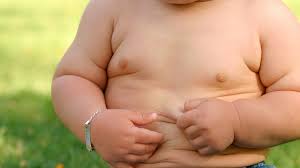Source – https://kemptonexpress.co.za/
If your child is overweight when they start school at the age of six, unless you do something about it at that point, the indications are that they are going to be overweight teenagers and obese adults. Evidence has shown that overweight children and teenagers have a greater risk of developing lifestyle diseases such as type …
If your child is overweight when they start school at the age of six, unless you do something about it at that point, the indications are that they are going to be overweight teenagers and obese adults. Evidence has shown that overweight children and teenagers have a greater risk of developing lifestyle diseases such as type 2 diabetes, hypertension, and cardiovascular disease later in life – and dying prematurely. Obesity is a global pandemic rapidly spreading among adults and children, in developed and developing countries alike. A new study has found that children who are overweight by the time they turn six should be screened for weight problems. This should be done in a sensitive and compassionate way.
Why six-year-olds?
Children who are overweight between the ages of two and five are five times more likely to be overweight when they are 12. There are two periods in a normal life cycle when the body makes new fat cells. The first is in the uterus and the second is around the age of six-years-old. The second phase lasts from the age of six to puberty. Outside these periods, our body’s existing fat cells are fixed and swell out or shrink as we gain or lose fat. In lean toddlers, their fat cells gradually shrink in the course of their early childhood. By the time they turn six-years-old, their body’s fatness is at its lowest point and it can then start reproducing fat cells until puberty when fat cells stop forming. But for obese toddlers, the second phase starts before they turn six and their bodies make pronouncedly more fat cells than lean children’s bodies. The consequence is that obese toddlers become obese adolescents with much more fat cells than the child who started out with a normal weight at six.
A fat finding mission
The study assessed the prevalence of obesity in six-year-olds as part of a campaign in South Africa to raise awareness of the problem among parents and educators. A total of 99 children were chosen from seven schools in Mangaung, the capital city of Free State province. The schools were chosen from quintile four and five schools, which when measured by their own resources and economic circumstances are well resourced and serve largely middle class and wealthy communities. The children’s weight, height, and waist circumference were measured and used to calculate a body mass index score and waist-to-height ratio. Both these figures are good predictors for future lifestyle disease risks such as type 2 diabetes, hypertension, and cardiovascular disease. A person with a good waist-to-height ratio can wrap a piece of string equal to their height around their waist at least twice. When the children had higher body mass indexes, they also had an increased waist to height ratio. The study found that one in four children from the schools surveyed were overweight when they started primary school. The only other South African study to look at child obesity is the South African National Health and Nutrition Examination Survey. It surveyed children between the ages of six and nine. Its 2012 results showed a lower national average than the Mangaung survey which surveyed only six-year-olds.
Nipping fat in the bud
Although there are many factors that play a role in preventing childhood obesity, parents’ perceptions of their children’s weight play an important role. A recent meta-analysis of 69 studies found that more than 50% of parents underestimate the weight of their obese children. These parents remain unaware of the risks their children face and are also unmotivated to take any action. At least half of the parents whose children are overweight struggle to recognise their children’s weight problems fearing that they will be labelled. To get involved, parents must first acknowledge the problem. Interventions aimed at preventing obesity in the pre-school years should be a priority for parents. Parents have to be involved in these interventions as they play a crucial role in modelling and establishing children’s dietary and physical activity patterns. By the time they turn six, overweight children should be referred to dieticians and nutritionists who are qualified to guide their parents in getting them to eat well and be more physically active at pre-primary and primary schools. The high prevalence of weight problems among six-year-olds found in this study is an urgent call to health care professionals to step up and empower parents, educators, and children with the necessary skills for healthy dietary practices and adequate physical activity.
